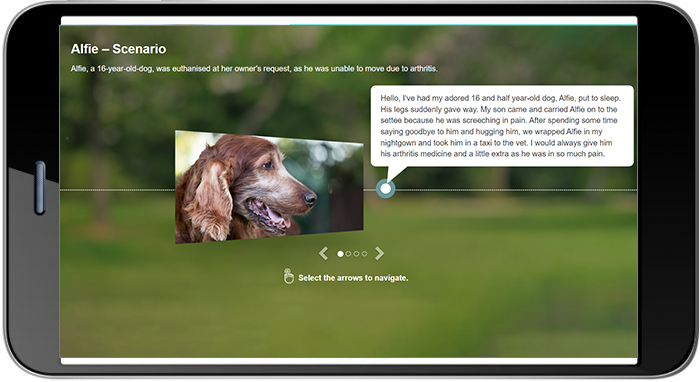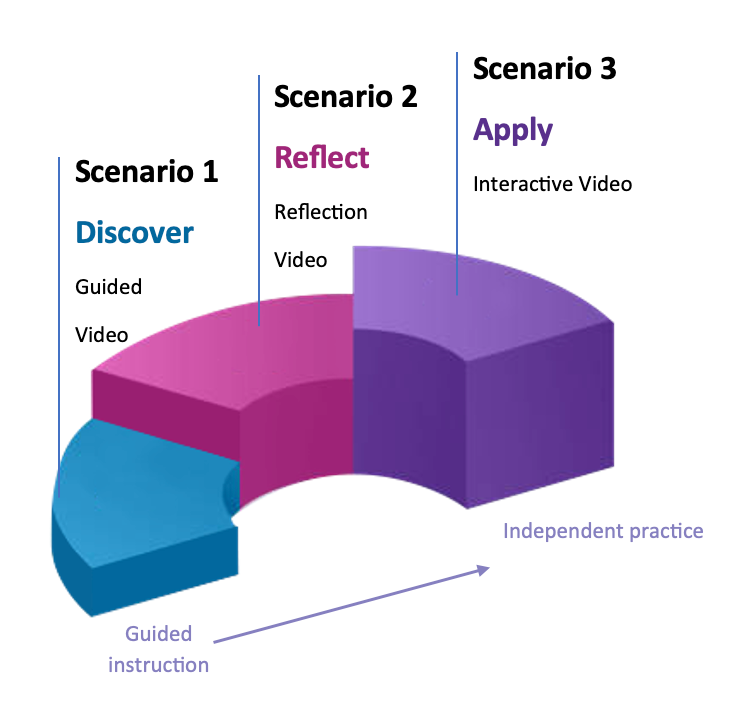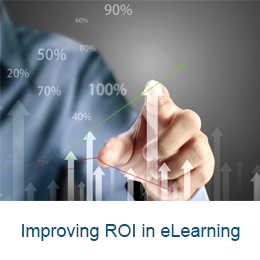
Scenario-based learning (SBL) is used extensively as a learner strategy in online learning. This article presents 7 examples illustrating how scenario-based learning (SBL) can elevate both Formal and Informal Learning experiences.
What Is Scenario-Based Learning?
Scenario-based learning is an instructional strategy that utilizes real-life situations to improve learning comprehension and its practical application. By employing the principles of “active learning,” this approach offers learners an immersive and highly relevant experience that closely mirrors real-world contexts. This method not only heightens learner engagement by making scenarios relatable and relevant but also creates a safe, virtual space for learners to practice skills, make decisions, and understand the consequences of their actions. The immersive nature of scenario-based learning fosters deeper learning and better prepares learners for real-life challenges, making it a highly effective learning tool.
Benefits of Scenario-Based Learning
From an L&D Perspective:
-
Real-life Situations Usage
Helps validate learning comprehension and application in practical scenarios.
-
Facilitates Application of Learning
Ensures that the training translates effectively to on-the-job performance.
-
Triggers Behavioral Change
Encourages adaptation of new practices and habits.
-
Enhances Decision-Making Skills
Develops the ability to make informed decisions in complex situations.
-
Boosts Critical Thinking
Encourages learners to analyze and evaluate scenarios critically.
From a Learner’s Perspective:
-
Relatable Situations
Simulates real-life challenges, making the learning process more meaningful.
-
Problem-Solving Environment
Encourages learners to navigate through challenges and find solutions.
-
Decision-Making Tool
Demonstrates the consequences of choices, fostering responsible decision-making.
-
Safe Practice Mode
Offers a risk-free environment to experiment and learn.
-
Skill Proficiency
Aids in mastering new skills and improving existing ones.
How Do You Create Scenario-Based Learning Programs?
Leverage the scenario-based learning strategy effectively using a streamlined 5-step plan:
-
Understand Your Audience
Assess the learner profile to tailor scenarios that are relevant and engaging.
-
Define Learning Objectives and Desired Outcomes
Clearly articulate what you aim to achieve, ensuring scenarios align with these goals.
-
Develop Scenario Structure and Approach
Craft scenarios ranging from simple to complex, considering interactivity levels. Consider linking scenarios through a cohesive narrative for a more immersive experience.
-
Select Appropriate Design Formats
Choose formats that resonate with your audience, using insights from previous steps.
-
Create Scenarios with Constructive Feedback Mechanisms
Design scenarios that offer detailed feedback and opportunities for recalibration based on learners’ performance.
Different Types of Scenarios You Can Create
-
Problem-Solving Scenarios
Present challenges or problems that learners must solve, ideal for critical thinking and decision-making skills.
-
Branching Scenarios
Offer multiple paths based on learners’ choices, each leading to different outcomes.
-
Role-Playing Scenarios
Allow learners to assume roles in simulated environments, enhancing empathy and understanding of diverse perspectives.
-
Skill-Based Scenarios
Focus on specific skill development, like negotiation or customer service.
-
Story-Based Scenarios
Use storytelling to create engaging and memorable learning experiences.
-
Exploratory Scenarios
Provide open-ended situations where learners can explore various outcomes without strict guidelines.
-
Gamified Scenarios
Integrate game elements to enhance learning more engagement and enjoyment.
You can craft scenarios at two levels:
-
Mini or basic scenario-based learning
This is used to validate the learner’s recall and basic comprehension (good for basic problem solving).
-
Complex or branching scenario-based learning
This is used to validate the learner’s proficiency to apply the learning.
Implementing Scenario-Based Learning (SBL) in Corporate Training
Scenario-based learning is a versatile tool adaptable for a wide range of corporate training objectives. At EI, we’ve successfully applied SBL in areas like:
- Compliance Training: Ensuring adherence to standards and regulations.
- Soft Skills Development: Enhancing interpersonal skills and emotional intelligence.
- Professional Skills Enhancement: Building job-specific technical skills.
- Leadership Training: Cultivating leadership qualities and managerial skills.
- Application Simulations: Offering hands-on experience with specific tools or processes.
Using scenario-based learning techniques can enhance the user experience manifold and make learning:
- Motivating.
- Interesting.
- Relevant and relatable.
- Experiential.
- Memorable.
- Continuous.
We leverage scenario-based learning to:
- Facilitate Knowledge Acquisition: Build foundational understanding.
- Boost Retention: Enhancing long-term memory of learned concepts.
- Practical Application: Ensuring skills learned are effectively applied in the workplace.
Now, I pick 7 examples from our vast repository to showcase how exactly we have used scenario-based learning to enhance the learning experience for Formal Learning as well as Informal Learning.
Scenario-Based Learning Examples for Formal Learning
Scenario-Based Learning in Customer Service
This course employs a standard scenario-based approach for helping customer service employees develop skills for handling difficult customers. The scenarios prepare the customer service executives for real life challenges.





Scenario-Based Learning in Soft Skills
This mobile-friendly interactive course includes scenarios to observe how words can make a difference in the workplace. The learners are given real-life situations, and the formative feedback helps them understand the impact of their actions and identify the right approach.


Scenario-Based Learning in Professional Skills
This game for an Oil and Gas major prepares the learners to navigate and overcome the challenges for establishing the EV charging stations in a fictious futuristic city. Through the challenges presented in the game learners are equipped to handle these challenges in their professional life.



Scenario-Based Learning in Sales Simulations
Through this Sales Simulation, the learners are skilled to handle different sales scenarios by analyzing the various inputs that are provided to them. Through this simulation learners get a safe environment to experiment and think out of the box.




Scenario-Based Learning Examples in Informal Learning
Scenario-Based Learning in Compliance
In order to reinforce the need for constant risk assessments of hazards at the workplace, this nugget features a video that uses high-impact, contextual imagery to recap the basic aspects of an HSE compliance course. This nugget specifically uses a scenario to help learners identify a possible hazard and prompt the right action through feedback.


Scenario-Based Learning in Soft Skills
This eLearning solution introduces real-life scenarios to sensitize employees of a pet crematorium. Through these scenarios the employees were being briefed about barriers to bond-centered euthanasia as well as after-life body care options.




Scenario-Based Learning in Professional Skills
A video-based learning module on DEI integrates immersive scenarios with live actors, dialogue, and narrative. Tailored for time-constrained learners, it fosters cultural intelligence through realistic customer interactions, guided by a course framework and recurring characters.

SBL emerges as a powerful instructional strategy, enhancing both formal and informal learning experiences. Through its immersive and practical approach, SBL not only fosters deeper comprehension and critical thinking but also effectively prepares learners for real-world challenges. The showcased examples demonstrate the versatility of SBL across various domains, showcasing its effectiveness in formal training programs and informal learning scenarios, making it a valuable tool for diverse educational objectives.



